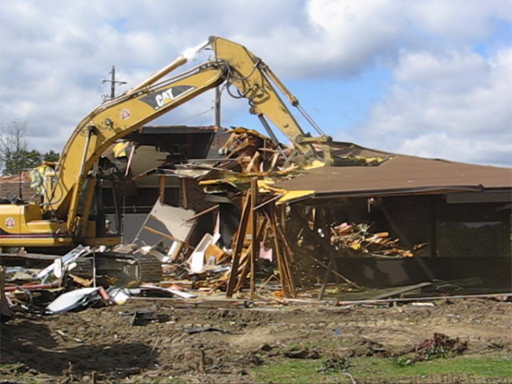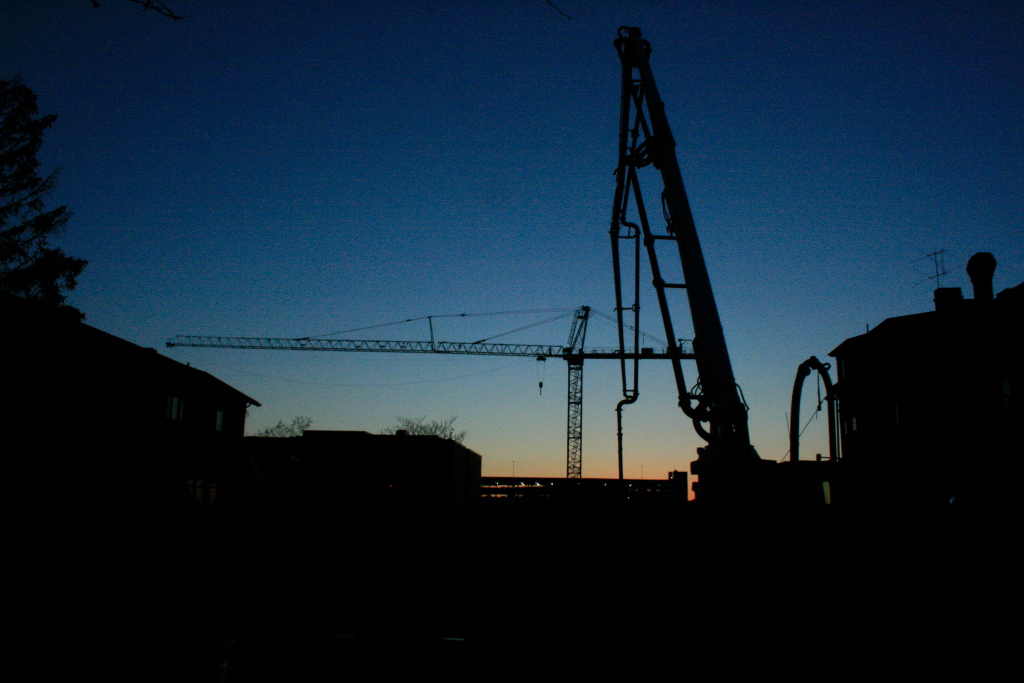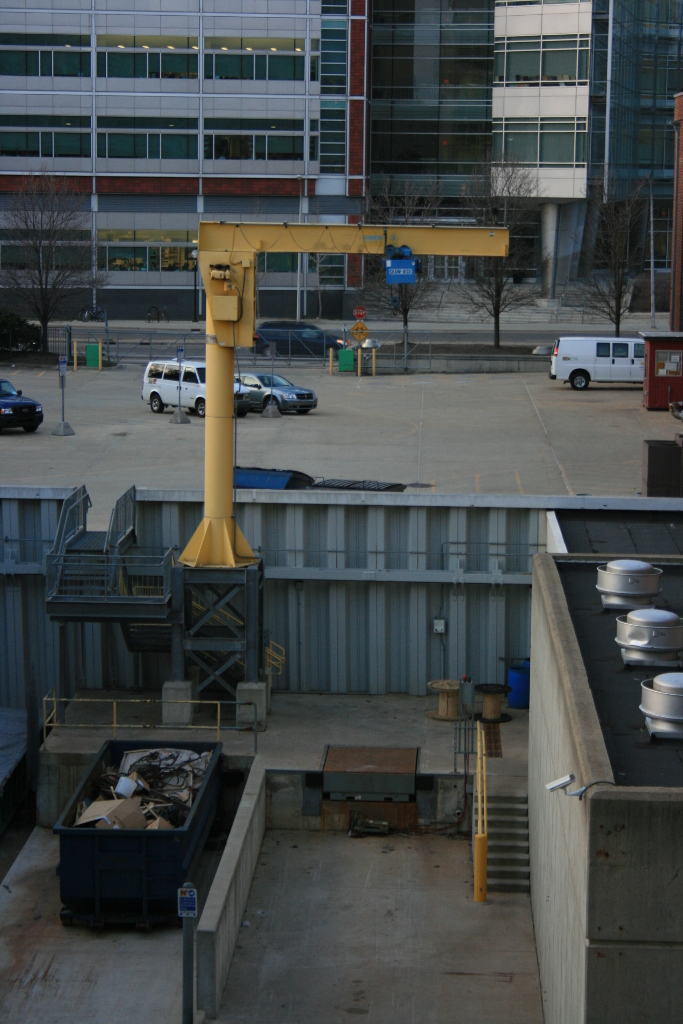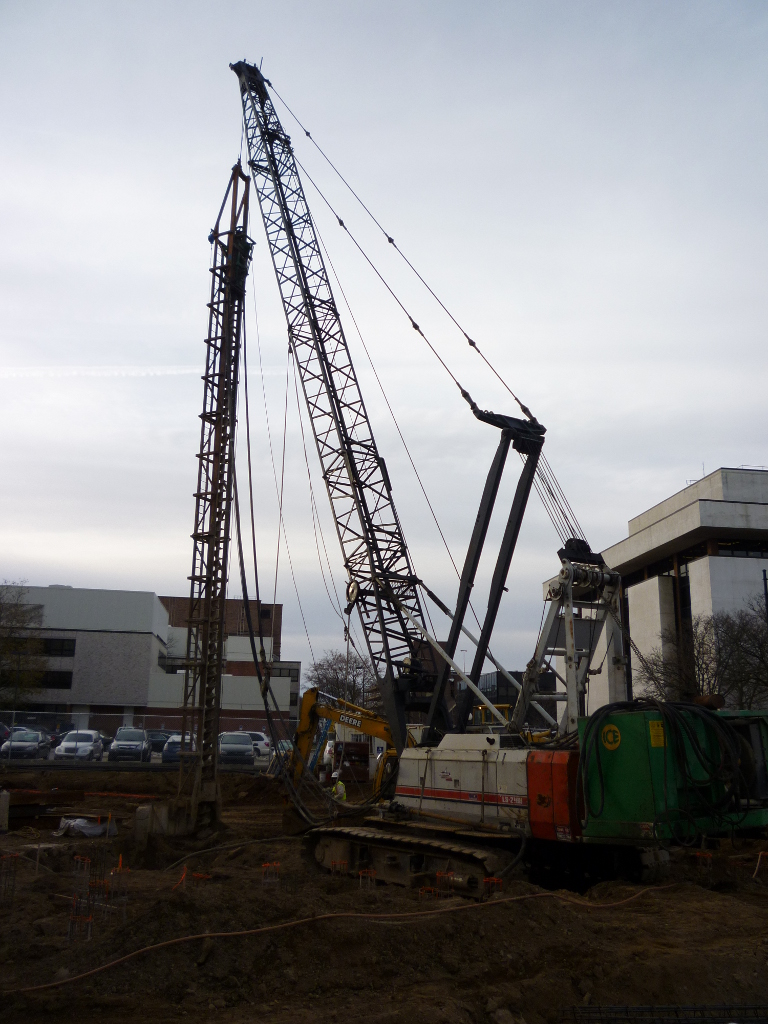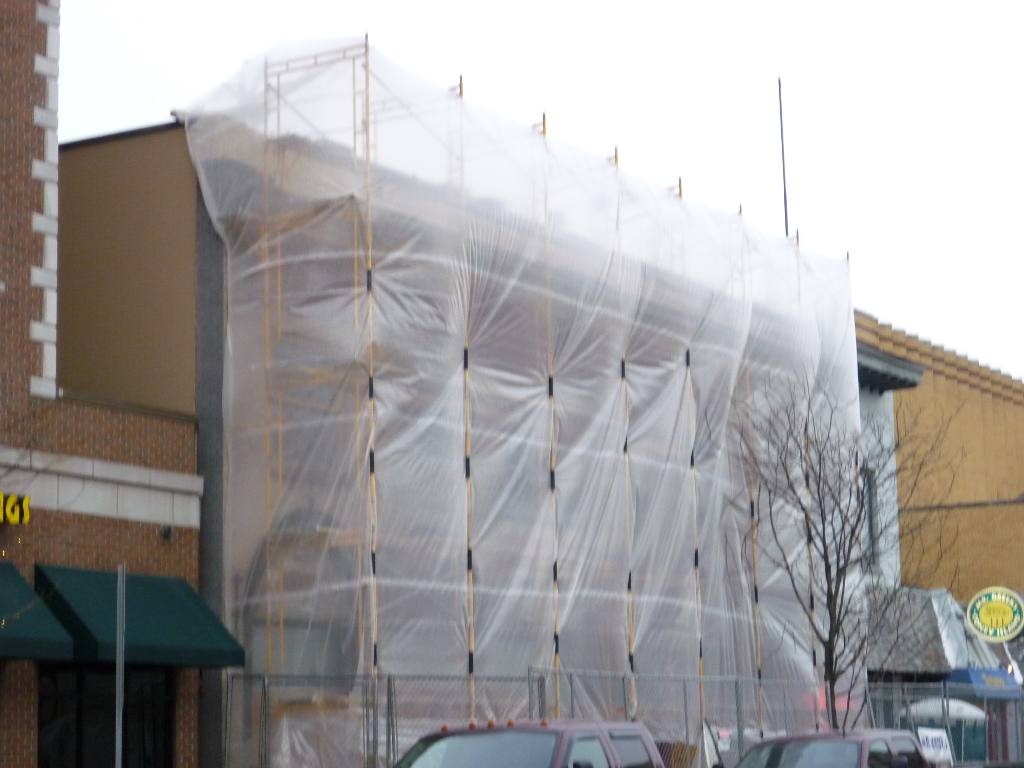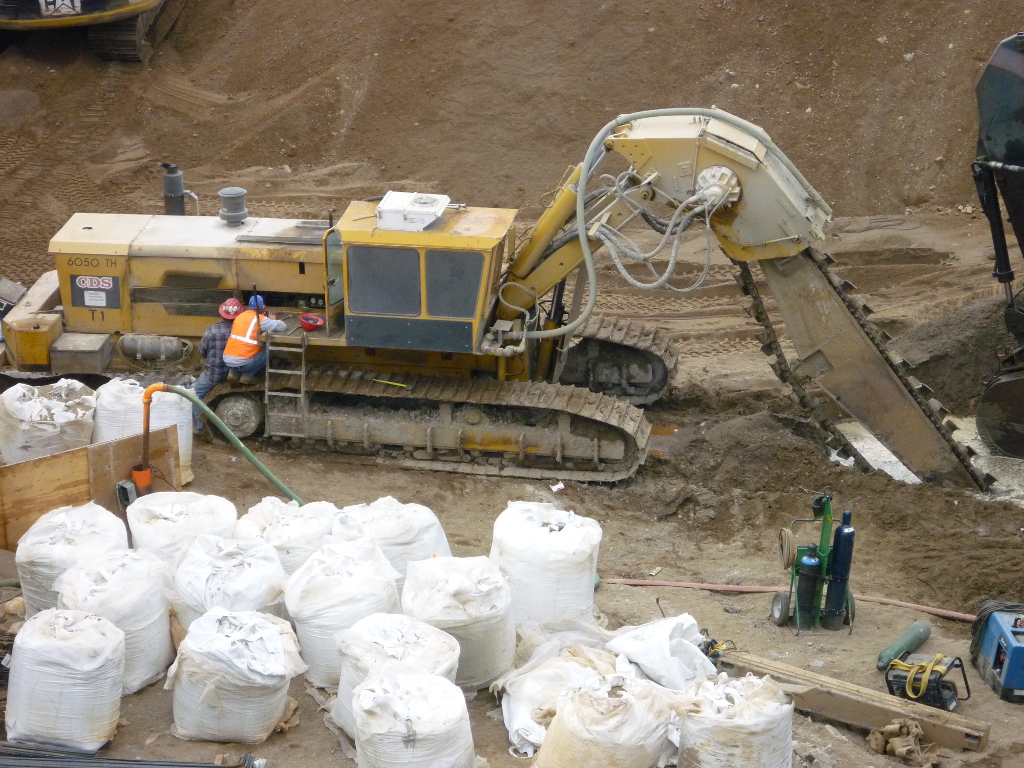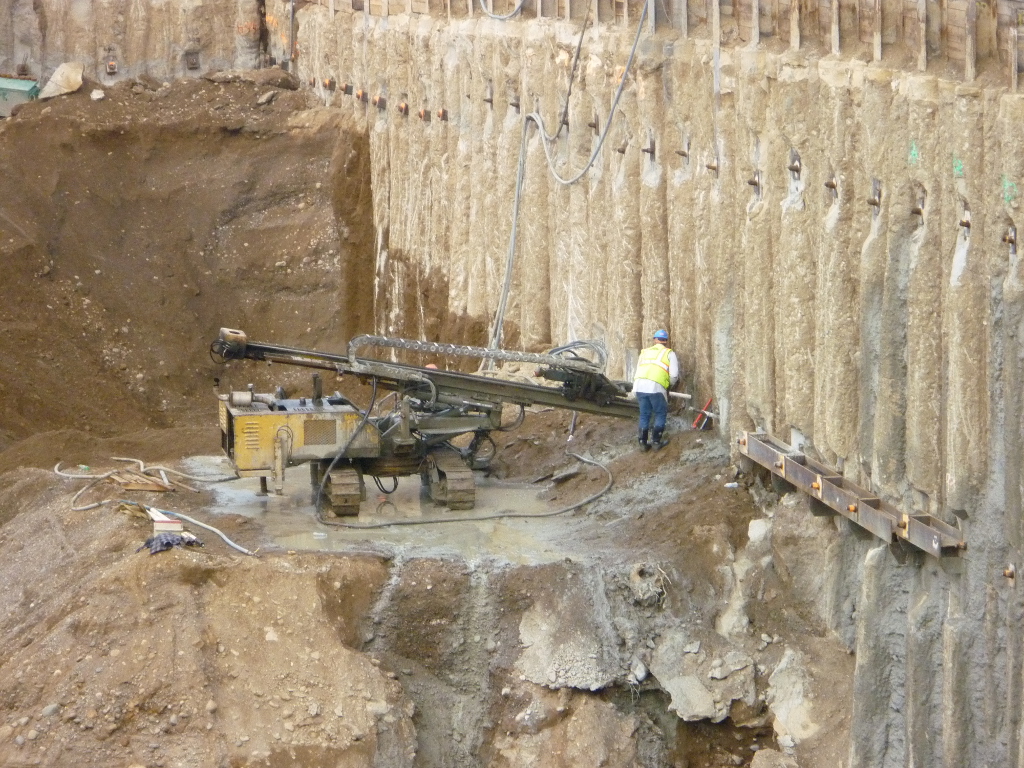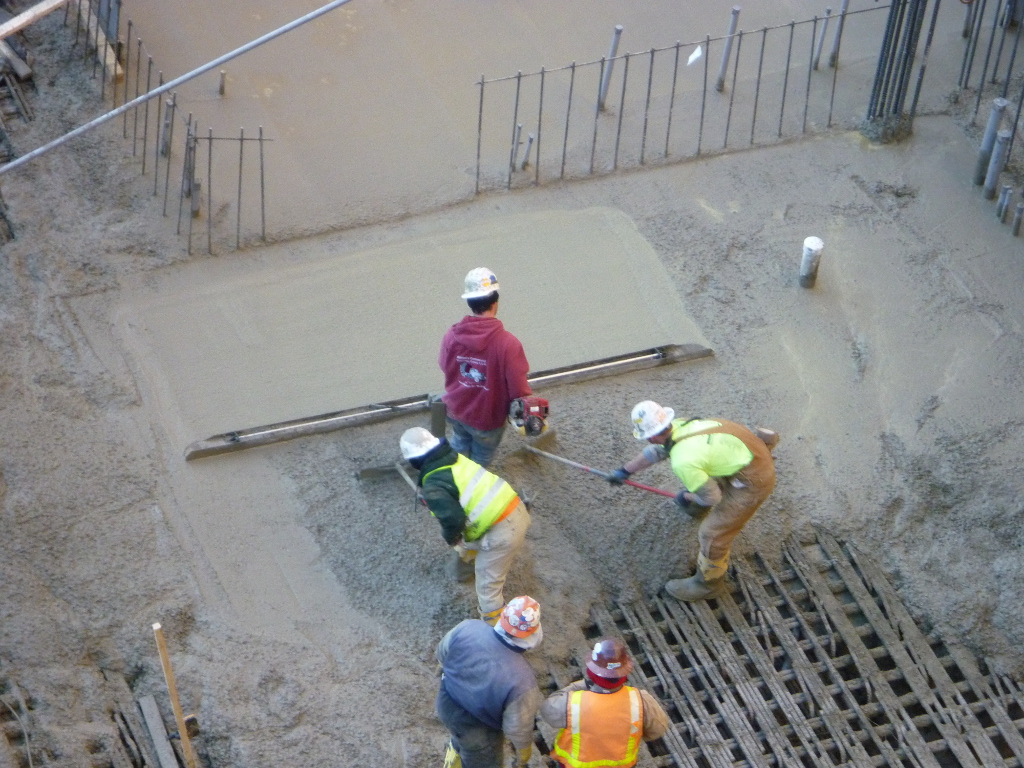
Photo Credit: Alex Mead
Seen here is a concrete pour crew in the middle of placing a mat foundation. The process that is happening here is the beginning of leveling the slab of concrete to the final depth. The tool the man in maroon is using is a called a screed and is basically a gas powered leveler. The two workers behind the screed move excess concrete out of the way and add concrete to areas that are lacking to allow the screed to make a relatively flat surface. Other finishing methods are then used to make a final slab that is within a tolerance of the specified depth.
